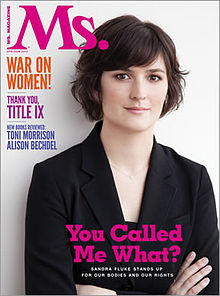Can’t Buy Me Love
Teased hair, short
skirts, leather jackets and some military-style lace-up boots, it may have been
Reagan’s morning in America but my girlfriends and I reigned the Los Angeles
night dance scene of 1980’s; or at least we thought we did. As I gave my elderly aunt a peck goodbye on my
way out to meet my friends, she peered over her reading glasses and said
sweetly, “Have fun tonight but remember, a boy won’t buy the cow if he’s gets
the milk for free.” Her advice was a
tactful metaphor cautioning that promiscuity does not beget marriage. Her logic did make sense. But, I knew several
women who had managed to find a willing buyer and not earned the wholesome white
of the wedding dresses they wore down the aisle. It seemed that free milk was
more complicated in human relationships. Certainly there must be some advantage
to just giving a taste.
A taste of free can be a door to freedom
Ms. Magazine began in 1971 as a single issue supplement in New
York Magazine. The test copy of 300,000 sold out in 8 days. In the weeks
following the launch publishers received 26,000 subscription orders and almost
as many letters. The first regular issue was released in 1972, a year before
the landmark Roe v. Wade decision. Mainstream media avoided in-depth reporting
on controversial women’s issues while Ms. made the third-rail its backbone. Abortion,
sexual harassment, rape, gender bias in language, and equal pay were (and still
are) the magazine’s beat. Unwilling to censor content to suit advertisers, the
magazine struggled financially for years after its launch. A strong, committed
readership enabled the magazine to go advertising free in 1991, allowing it to
walk its talk on corporate advertising; Ms. had long maintained that corporate
interests exert editorial control over news content in the mainstream media. Readers,
myself included, willingly shelled out around $8 for a newsstand copy when
other women’s magazines were selling for a fraction of that, about $2.
The Third Rail, Pay Walls and the Cost of Free in the 21st Century: Pay Now or Pay Dearly Later
Have you ever started reading an original investigative
report and when you click to read the full article a pay wall pops up and asks
you to subscribe? Did you pay or did you click away? If you clicked away, did
you find the topic on a free site? Suppose you found it but before you could
read the article you had to watch a 30 second advertisement for Birdseye frozen
peas. That article is a paraphrased version of the one you clicked away from:
an investigative report about hazardous working conditions farm workers face in California’s
central valley. Do you wonder if they left anything out? While you didn't pay upfront to read the article, what you didn't find out may cost you in the long run.
Kim Kardashian stories are not free to produce but you will never
be stopped by a pay wall. Her lifestyle is so infused with product; the
easy-to-sell pop-up ads alone more than pay for the reporter’s time and energy. Quality investigative reporting, journalism's third rail, is not
free to produce either. If it’s a report in the Los Angeles Times or the New
York Times, you will probably meet a pay wall after a number of visits. Should you pay? If you complain that
corporations control the media and the message, you should pay. If you complain that there is no good reporting anymore,
no Watergates, no Pentagon Papers; you
should pay. If you complain that you're a loyal reader and should not be penalized, you need a reality check and
you should pay. Raw information may abound on the Internet but it is
meaningless without a dedicated person to put on the gum shoes, do the research, and tell the
story. If all you want is free milk, get used to more Kim Kardashians; your corporate sponsored cow.



No comments:
Post a Comment